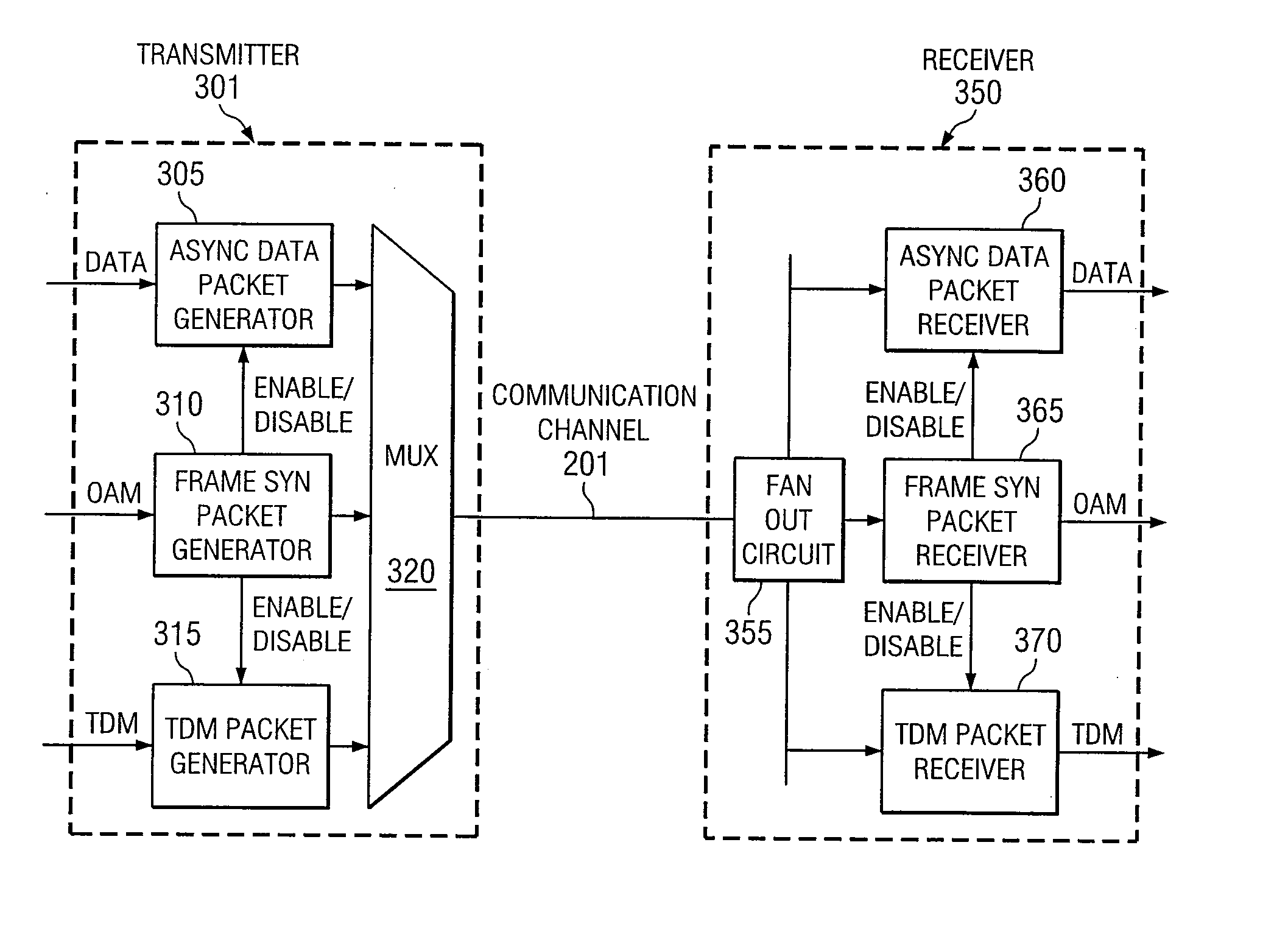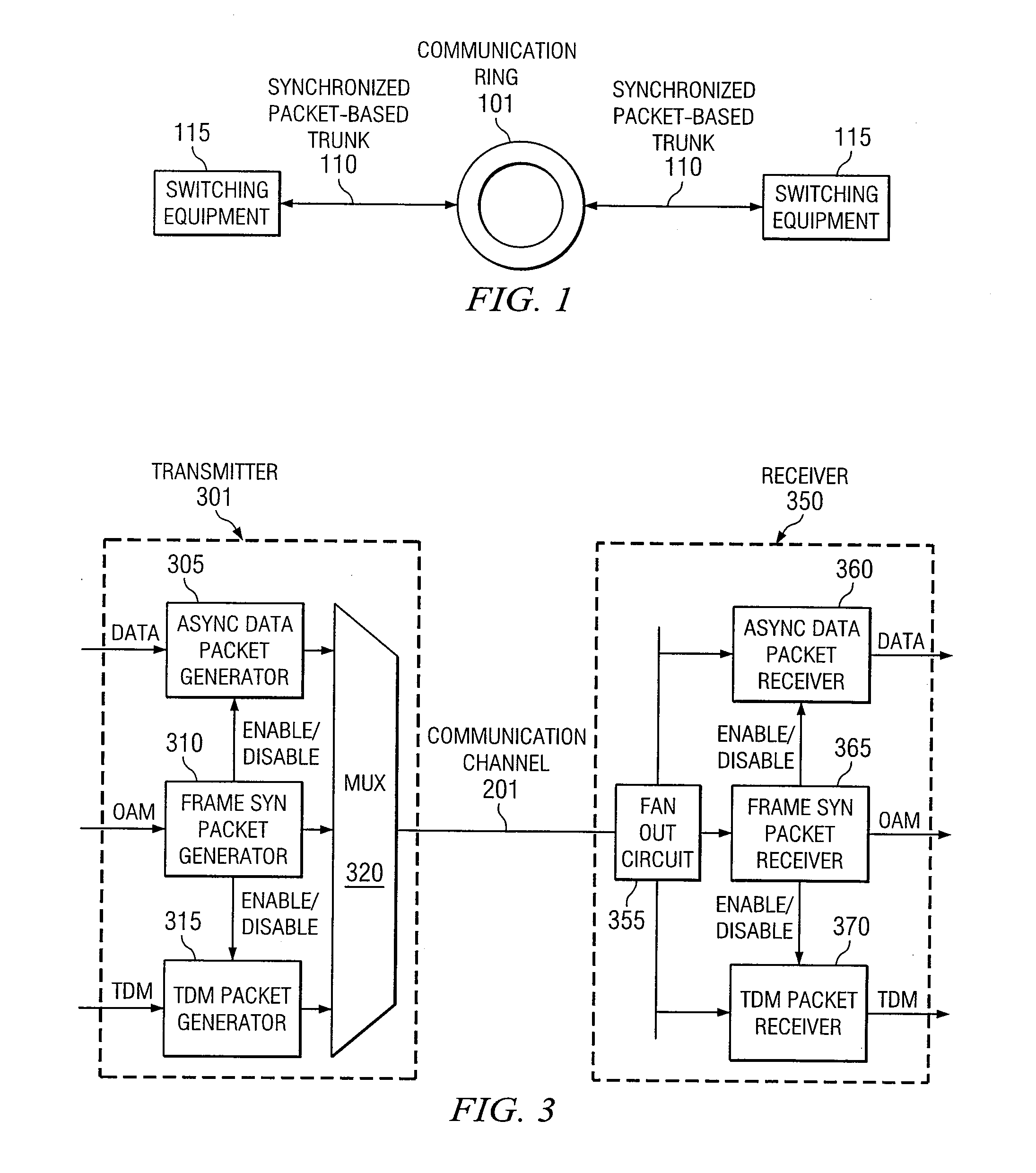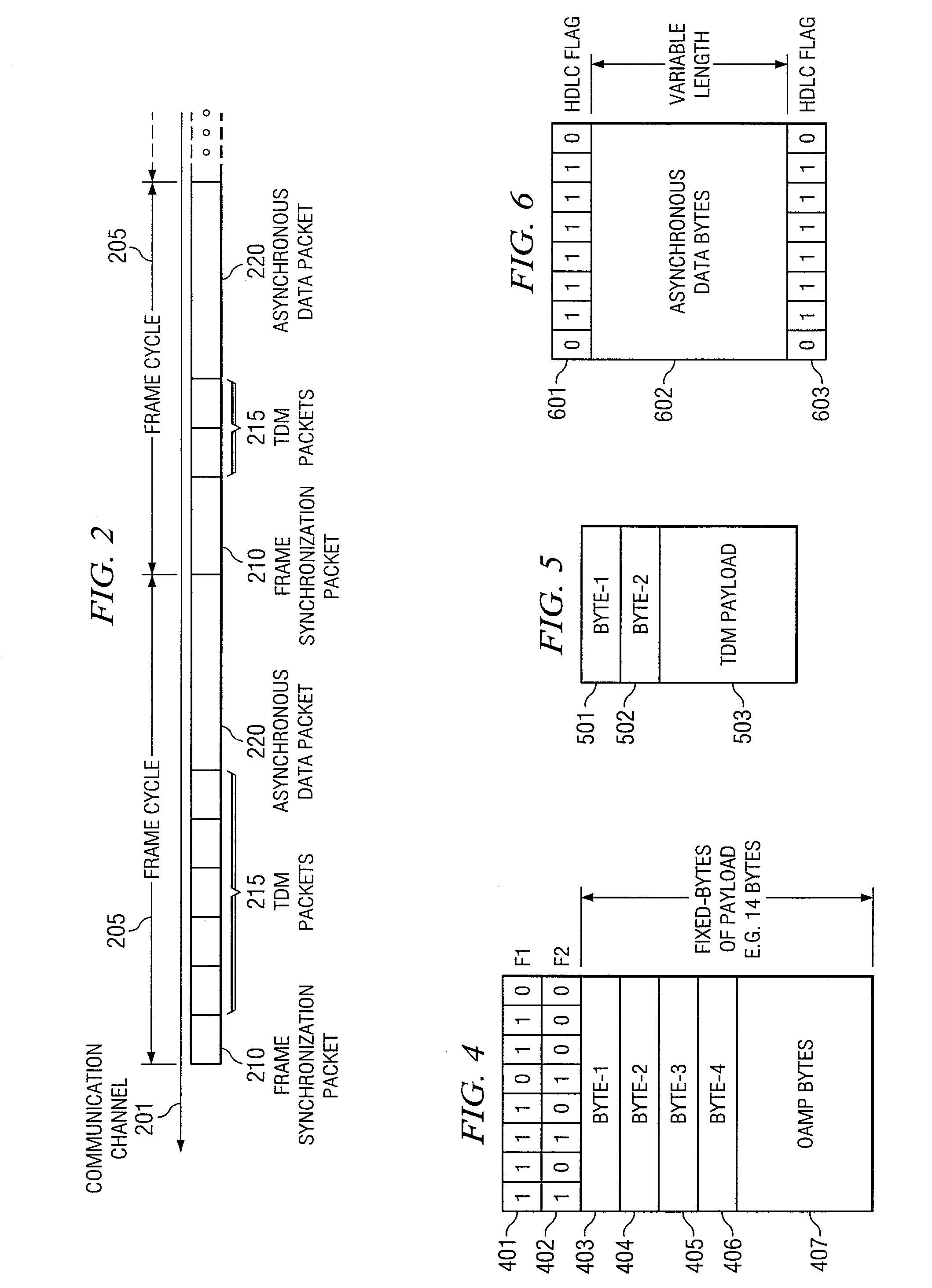Apparatus and Method for Facilitating Data Packet Transportation
a data packet and apparatus technology, applied in data switching networks, frequency-division multiplexing, instruments, etc., can solve problems such as difficult traditional multiplexing schemes, inability to efficiently use communication channels under congested conditions, and limiting jitter to acceptable levels, so as to facilitate the minimization of jitter and transportation, simplify the multiplexing and demultiplexing of synchronous data, and reduce the time needed
- Summary
- Abstract
- Description
- Claims
- Application Information
AI Technical Summary
Benefits of technology
Problems solved by technology
Method used
Image
Examples
Embodiment Construction
Interpretation of Terms
[0040] Unless otherwise noted in this specification or in the claims, all of the terms used in the specification and the claims will have the meanings normally ascribed to these terms by workers in the art. Certain terms specifically comprise the meanings associated with them as follows:
[0041]“Computer system” refers to individual standalone computers, multiple computers coupled in any manner, and software simulations of computers regardless of the intended use of the computer system or the technology used to implement the computer system. The term “Computer system” includes, but is not limited to, packet-switching systems and other communication switching systems.
[0042]“Frame Cycle” refers to the time period on a communication channel beginning with the start of the transmission of a Frame Synchronization Packet and ending with the start of the transmission of the next subsequent Frame Synchronization Packet on that communication channel. In some embodime...
PUM
 Login to View More
Login to View More Abstract
Description
Claims
Application Information
 Login to View More
Login to View More - R&D
- Intellectual Property
- Life Sciences
- Materials
- Tech Scout
- Unparalleled Data Quality
- Higher Quality Content
- 60% Fewer Hallucinations
Browse by: Latest US Patents, China's latest patents, Technical Efficacy Thesaurus, Application Domain, Technology Topic, Popular Technical Reports.
© 2025 PatSnap. All rights reserved.Legal|Privacy policy|Modern Slavery Act Transparency Statement|Sitemap|About US| Contact US: help@patsnap.com



